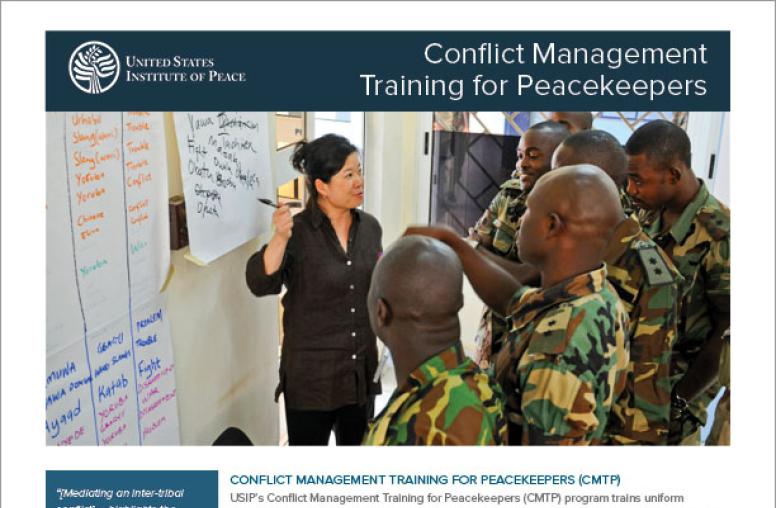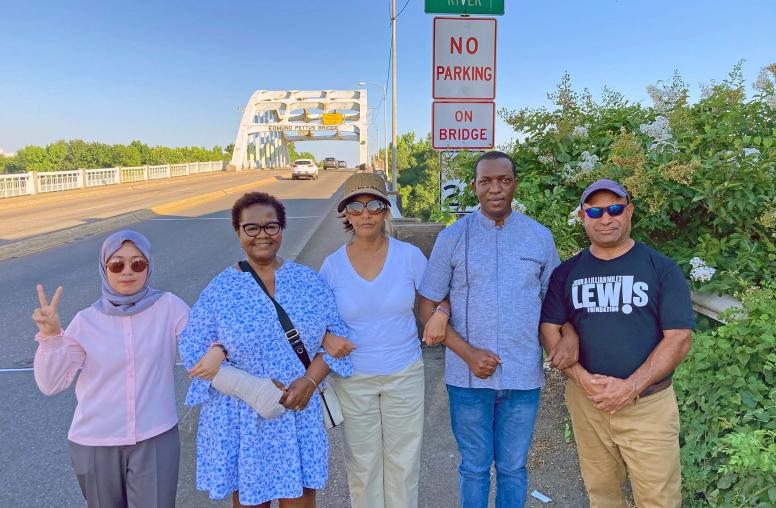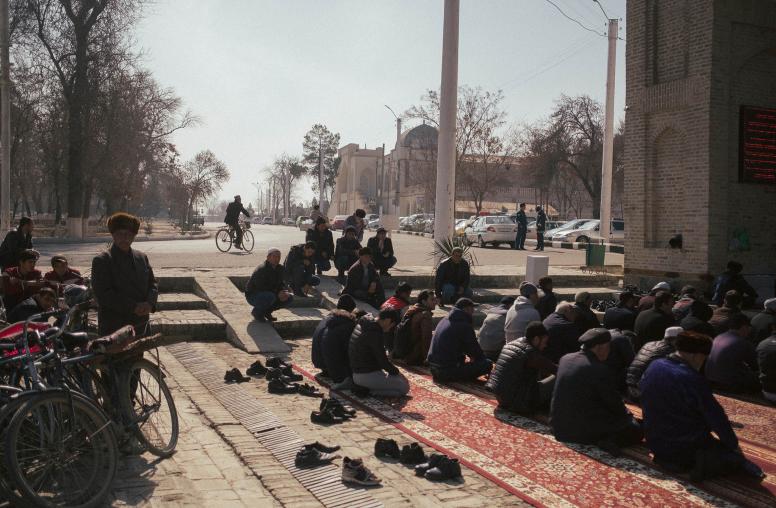Engaging Youth in Building Peace
An International Day of Peace Twitter Chat
From soccer games to theatre productions to entrepreneurial investments, young people are mobilizing to promote peace, according to participants in a September 16 Twitter chat on youth and peacebuilding. The chat showed the important role youth play as a force for peace in a world dominated by violent headlines.

According to the World Bank, almost half of the world’s population is under the age of 25, making this largest generation a key player in resolving conflicts. The Global Peacebuilding Center (GPC) at the U.S. Institute of Peace organized the Twitter chat as part of an effort to affirm the power of young people to build a more peaceful world. The effort marks the International Day of Peace on September 21, when people around the world show their support for the ideals of peace and take action to end violent conflict.
In Tuesday’s chat, the GPC (@buildingpeace on Twitter) asked participants to discuss why the International Day of Peace matters to them, and why young people are key partners in building peace. One participant responded:
Society is bombarded everyday w/ violence in the news. PeaceDay enables global awareness and reflection of how/what ppl can do #PeaceDayChat
— FCPS Peer Mediation (@PeerMediateFCPS) September 16, 2014
Other participants highlighted that the day simultaneously glorifies peace while making it a “practical reality” by showcasing real people taking simple actions. For example, participants in the chat have created campaigns encouraging youth to sign pledges to end violent conflict or to commit acts of kindness, posted videos about how investing in youth can contribute to sustainable peace, and raised funds to aid those affected by Ebola in Liberia.
Youth bring particular qualities to peacebuilding, including energy, creativity, and divergent thinking. Research shows that we lose creativity as we grow older, and peacebuilding requires thinking outside of the box. Youth have big ideas about how to change their own communities and the world, and the capacity to implement them.
Empowering today's students to see themselves as leaders in the world community = the path to peace. #PeaceDayChat #CVUHHB
— A. Snow Terwillegar (@SnowyCrow) September 16, 2014
Participants in the chat shared examples of the young peacebuilders who inspire them:
@buildingpeace @PeacebuildersCA We're inspired by Mateo Parker, nominated for the Peace First prize http://t.co/uZRSmpDGSJ #PeaceDayChat
— Kids for Peace (@KidsforPeace) September 16, 2014
.@KidsforPeace Super! We are inspired by these Iraqi teens overcoming divisions - Salam Shabab http://t.co/KT6UeJ0Jbo #PeaceDayChat
— BuildingPeace.org (@buildingpeace) September 16, 2014
Q3:We are inspired by Ms. Lavezzo @EatonSchool, who integrated peace building/conflict resolution into her 5th grade classes! #PeaceDayChat
— Kate McNamee (@EmbassyAdoption) September 16, 2014
#PeaceDayChat q3: Malala. And every young person who moves forward w/love, optimism, and resilience, despite trying and unjust circumstances
— Jessica Berns (@jessicabberns) September 16, 2014
S/O to @CHSCompliment10 @Chantilly_HS they are working with a nearby ES to teach empowerment tools n ways to be a good friend. #PeaceDayChat
— FCPS Peer Mediation (@PeerMediateFCPS) September 16, 2014
Youth in MENA are advocating peace online. A few videos here now, more videos are articles to come! https://t.co/dszBlsaZXh #PeaceDayChat
— Common Ground News (@CGNewsService) September 16, 2014
While youth have a remarkable capacity to contribute to peacebuilding and to manage conflicts, they also face challenges, such as lack of access to education, resources, decision-making processes, and other sources of empowerment. They also need specific knowledge, skills, and attitudes to build peace year-round:
Youth need to see that they have the ability to affect real change in their communities. Youth empowerment will bring peace. #PeaceDayChat
— Search4CommonGround (@SFCG_) September 16, 2014
.@buildingpeace A4: youth change-makers need active support from mentors/advisors. Meshing high energy + experience #PeaceDay #PeaceDayChat
— Nahyan Chowdhury (@Nahyan) September 16, 2014
A4: Passion and dedication to make a difference in the world. #PeaceDayChat
— UNA-USA (@unausa) September 16, 2014
A4: Be open-minded, patient, compassionate, curious about other cultures, understanding #PeaceDayChat
— Kids for Peace (@KidsforPeace) September 16, 2014
Q4: An understanding of multiple perspectives, an ability to communicate ideas, and a desire to take action #PeaceDayChat
— Kate McNamee (@EmbassyAdoption) September 16, 2014
Q4 : Youth need to know that they CAN be agents of CHANGE & taught how to engage grassroots. Seeing change from the bottom up #PeaceDayChat
— Global Unites (@GlobalUnites) September 16, 2014
As the International Day of Peace approaches and the world remains in turmoil, with violent conflicts dominating the news, it is important to remember the work that does not make the headlines. Young people around the world – even in places of conflict – are taking action to shape a more peaceful future. Join us in affirming the power of youth as peacebuilders.
Read the entire conversation on Twitter.
Learn more about the Global Peacebuilding Center.



